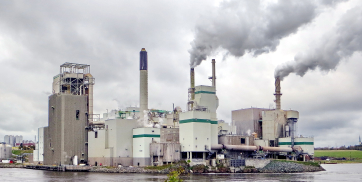A concise rundown of some of the most important industrial methane technology research that was published during Summer 2020.
June 2020
Tom J. Cinq-Mars, Taisa Kropotova, Maria Morgunova, Amina Tallipova, Sher Yunusov
An analysis shows considerable lack in corresponding regulation between the United States and the Russian Federation, two of the largest oil and natural gas producers. The study shows a strong misalignment between international, national, and corporate actions.
Take-home message: An opportunity exists for international cooperation and exchange of best practices between Russia and the US to reduce existing gaps in regulation and technological adaptation.
July 2020
Evaluation of next generation emission measurement technologies under repeatable test protocols
Clay S. Bell, Timothy Vaughn, Daniel Zimmerle
Twelve handheld, mobile, and continuous methane-sensing technologies performed single-blind testing at the Methane Emissions Technology Evaluation Center (METEC) test facility. Compared to mobile and handheld solutions, continuous monitoring solutions had lower detection rates and localization accuracy.
Take-home message: Controlled release experiments are important for understanding how technologies differ in detection, localization, and quantification performance.
Variability observed over time in methane emissions from abandoned oil and gas wells
Stuart N. Riddick, Denise L. Mauzerall, Michael A. Celia, Mary Kang, and Karl Bandill
Methane emissions measured from 18 abandoned O&G wells in the US and UK. Average emissions rates at all wells varied by a factor of 18 and ranged by factors of 1.1-142 over a 24-hour period. The researchers found no correlation between emission rate variability at emission rate, temperature, humidity, or atmospheric pressure.
Take-home message: High methane emission events from abandoned wells tend to be short-lived, so short-term (< 1 h) sampling is likely to miss them.
August 2020
Daniel Zimmerle, Timothy Vaughn, Clay Bell, Kristine Bennett, Parik Deshmukh, and Eben Thoma
An experiment at the Methane Emissions Technology Evaluation Center (METEC) test facility evaluated leak detection performance using OGI. Professional inspectors from 16 O&G companies and 8 regulatory agencies conducted 488 inspections over 10 months. The leak size required to achieve a 90% probability-of-detection in this study is an order-of-magnitude larger than prior studies.
Take-home message: OGI cameras are less sensitive in real-world conditions than previously thought. Inspector experience is a major factor in detection performance.
September 2020
Sean Coburn, Caroline B. Alden, Robert Wright, Griffith Wendland, Alex Rybchuk, Nicolas Seitz, Ian Coddington, and Gregory B. Rieker
Researchers field validate a continuous sensor able to detect methane emissions at distances of greater than 1 km. Validation was performed at the Methane Emissions Technology Evaluation Center (METEC) test facility and at an active natural gas storage facility.
Take-home message: It is possible to use long-range continuous measurement to monitor for methane emissions.




